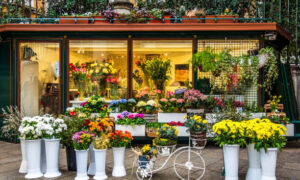Are you exhausted from dedicating endless hours to watering your plants, only to witness their deterioration despite your best intentions? Worry no more! In our fast-paced world, where time is a valuable asset and water scarcity is a looming concern, the demand for innovative tools that streamline the process of nourishing our cherished greenery is evident. From intelligent irrigation systems to self-watering containers and advanced plant sensors, this article will guide you through the latest technologies transforming the landscape of plant watering.
Introduction to the Significance of Effective Plant Watering
Water is a fundamental requirement for all living organisms, including plants. It plays a pivotal role in determining a plant’s growth and survival. As concerns about water scarcity and environmental sustainability rise, the importance of efficient plant watering becomes more pronounced than ever.
Efficient plant watering involves providing plants with precisely the right amount of water for optimal growth and health. It necessitates an understanding of the unique needs of different plants and the use of suitable methods and tools to ensure they receive adequate hydration without unnecessary water waste.
One of the primary reasons efficient plant watering is imperative lies in its role in water conservation. A United Nations report reveals that 2.2 billion people worldwide lack access to safe drinking water, a number expected to rise due to climate change and population growth. Mindful water usage in activities like gardening can alleviate undue strain on the planet’s already limited freshwater resources.
Conventional Plant Watering Methods and Their Limitations
While watering plants remains a crucial task for gardeners and plant enthusiasts, traditional methods are often time-consuming, wasteful, and not uniformly effective in delivering the required amount of water. In this segment, we’ll explore some common traditional watering methods and their drawbacks.
1. Hand Watering:
Hand watering, using a hose or watering can, is a prevalent method among gardeners. Despite its apparent simplicity and affordability, hand-watering has several drawbacks. It can be time-consuming, especially in large gardens, requiring continuous movement between plants and consuming a significant portion of one’s day. Moreover, it lacks precision, leading to an uneven distribution of water among plants and potentially harming them. The manual nature of hand watering also contributes to water waste through overwatering or missing spots.
2. Sprinkler Systems:
Sprinkler systems, with pipes and sprinkler heads that spray water evenly, are another popular choice. Despite their convenience in covering large areas swiftly, they suffer from drawbacks. Water wastage occurs due to evaporation or wind dispersing the spray away from its intended target, resulting in higher utility bills and exacerbating drought conditions. Furthermore, sprinkler systems lack specificity in catering to individual plants’ needs, applying water uniformly regardless of individual requirements.
3. Self-watering Systems:
Self-watering systems, a newer concept, involve containers with built-in reservoirs releasing water gradually to plant roots. While seemingly ideal, these systems have drawbacks. The initial setup and maintenance costs can be high, and the need for regular monitoring and reservoir refilling contradicts their time-saving intent.
Despite the apparent convenience of traditional plant watering methods, they harbor various limitations that impede efficient plant growth and contribute to water waste. Considering these drawbacks is essential when seeking innovative tools for effective plant watering.
The Emergence of Innovative Tools for Effective Plant Watering
The ascent of innovative tools for effective plant watering has revolutionized the practices of both gardeners and plant enthusiasts. With escalating concerns about water conservation and the desire to save time in our hectic lives, these tools have become indispensable for maintaining vibrant and healthy plants.
Among the most popular tools gaining traction is the drip irrigation system. Connecting tubes or pipes with small holes directly to the water supply, this system drips water slowly onto the soil around plant roots. This method not only reduces water evaporation but also allows for precise watering, preventing waste in non-plant areas.
Another transformative tool is the self-watering planter. Equipped with a reservoir at the base, it stores excess water and dispenses it to plants as needed. This feature eliminates the need for frequent watering, maintains consistent moisture levels for optimal plant growth, and prevents overwatering.
For individuals with busy schedules or multiple plants to tend to, automated sprinkler systems prove invaluable. These systems employ timers and sensors to deliver precise amounts of water at scheduled intervals, ensuring each plant receives adequate hydration without manual effort.
In addition to high-tech solutions, low-tech options such as olla pots or porous clay pots buried near plant roots gradually release water into the soil. Mobile apps have emerged as essential tools, offering personalized recommendations based on factors like location, weather conditions, and plant types. These apps also provide watering reminders and track water usage to aid users in monitoring conservation efforts.
The rise of innovative tools for effective plant watering simplifies water conservation while promoting plant health. These tools not only save time and effort but also contribute to a sustainable future by reducing water waste. With continuous technological advancements, the anticipation of more exciting solutions in the near future is justified.
Benefits of Incorporating These Tools in Gardening
1. Time and Effort Savings:
The foremost advantage of utilizing innovative watering tools in gardening is the significant time and effort savings. Traditional methods, such as hand-watering or dragging hoses around, can be labor-intensive and time-consuming. Tools like drip irrigation systems and soaker hoses facilitate effortless watering without the need for manual labor.
2. Water Conservation:
Efficient water usage is essential for sustainable gardening. These tools ensure that the right amount of water reaches plant roots directly, minimizing evaporation and runoff. This not only conserves water but also prevents overwatering, which can lead to plant diseases.
3. Promotion of Healthy Plant Growth:
Proper watering is crucial for fostering healthy plant growth. These tools provide consistent moisture to the roots, maintaining optimal soil moisture levels and resulting in stronger, more resilient plants. Some tools, like drip irrigation systems, offer precise control over water amounts, ensuring plants receive the appropriate quantity for growth.
4. Weed Reduction:
Weeds can be detrimental to gardens, competing with plants for water and nutrients. The use of mulch or soaker hoses in combination with drip irrigation systems can significantly reduce weed growth. Mulch acts as a barrier against sunlight, and soaker hoses deliver water directly to plant roots, minimizing soil wetting where weed seeds may lie dormant.
5. Cost-Effective:
Although investing in watering tools may seem initially costly, it proves cost-effective in the long run. Drip irrigation systems use less water compared to traditional methods, resulting in lower utility bills. Additionally, tools like mulch reduce soil surface evaporation, further reducing water consumption. These tools also contribute to preventing plant diseases and saving money on pesticides and treatments.
6. Convenience and Flexibility:
Many watering tools are designed for convenience and user-friendliness. Drip irrigation systems can be set on timers, automating the watering process and freeing up time for other gardening tasks. Additionally, these tools are often flexible and customizable to fit any garden size or shape.
Incorporating innovative watering tools into gardening not only ensures efficient water usage but also offers numerous benefits for plant health and overall convenience. By integrating these tools into your gardening routine, you can save time, effort, and water and promote a flourishing garden.
Selecting the Right Tool for Plant Watering
Choosing the appropriate tool for watering your plants requires careful consideration of several key factors. The type of plant, the size of your garden or indoor space, and your personal preferences all play a crucial role in determining the most suitable tools. In this section, we’ll explore essential considerations when selecting tools for efficient plant watering.
1. Consider the plant type:
Different plants have varied water requirements and thrive under distinct conditions. Understanding the specific needs of your plants is crucial before choosing watering tools. Succulents and cacti, for instance, require infrequent but deep watering, while delicate herbs may benefit from more frequent misting. Some plants may be better suited for specific watering methods; shallow-rooted plants like lettuce may thrive with drip irrigation systems, while larger trees or shrubs may benefit from soaker hoses.
2. Evaluate Your Garden or Indoor Space:
The size and layout of your garden or indoor space significantly impact the suitability of watering tools. Large outdoor gardens with numerous plants may benefit from sprinkler systems equipped with timers for automated watering. Smaller spaces, such as balconies or indoor gardens, may find handheld spray bottles or small watering cans more practical, allowing for precise control and preventing overwatering.
3. Consider personal preferences:
While functionality is paramount, personal preferences should also be taken into account when choosing watering tools. Some individuals may prefer traditional metal watering cans, while others find plastic ones more manageable. If you experience challenges with heavy lifting or have mobility issues, opting for lightweight materials like plastic hoses can ease the task of watering. Consider what aligns best with your needs and preferences for a more enjoyable gardening experience.
Conclusion
Choosing the right tool for efficient plant watering involves understanding your plants’ specific needs, assessing your space, and considering personal preferences. By carefully weighing these factors, you can ensure your plants receive optimal care while saving time and water in the process.



































